Mastino Napoletano Züchter
Mastino Napoletano Züchter aus Europa
JULIA AUGUSTA TAURINORUM REPETTO SIMONE, Via Baisa 26/1, 10060 FROSSASCO (TO)
Italy (it) Tel. 0039.121.353164 / baissa@tiscalinet.it (Mon Jan 8 23:24:19 2001)
FRUIT D’AMOUR Andrea Spiriev, PO Box 32, Páty H-2071
Hungary (hu) Tel. / Fax: (36)-23-343539 / (36)-23-555031 / spiriev@matavnet.hu (Mon Oct 9 09:42:11 2000)
MASTINO NAPOLETANO VD WILTIMANA wilhelmien bastiaans, heikantweg 15, langenboom, nederland
Netherlands (nl) Tel. / Fax: 0031-486-432164 / 0031-486-432164 / wiltimana@worldmail.nl (Mon May 22 14:59:07 2000)
DE LA BAJO PAIS H van den Berg, Kaatsweg 16, 9305 TA Roderesch
Netherlands (nl) Tel. 0031-505010020 – E-Mail: mastino@bajopais.com (Sun Sep 3 21:46:23 2000)
ROYFONTE José Miguel Roy Anglada, C/Arroyo Segundo Nº8, 29600 Marbella – Málaga, Andalucía
Spain (es) Tel. / Fax: 952832998 / 952823642 / royfonte@wcostasol.es (Thu Jan 27 20:09:49 2000)
APEG ROMASTINO Moldovan Razvan, Licurici 7, Reghin, Mures
Romania (ro) Tel. / Fax: 0040-95-820893 / 0040-65-521184 – E-Mail: mastino@go.ro (Thu May 18 14:47:42 2000)
ALLEVAMENTO DELLA GUAPPARIA- Giovanni Giani, via San Martino,2, MESENZANA 21030, VA
Italy (it) Tel. / Fax: 0039 332 576049 / 0039 332 576049 – E-Mail (Sun Sep 19 06:59:42 2004)
RAZVAN Moldovan, Licurici 7, Reghin, Mures
Romania (ro) Tel. / Fax: 0040-92-376155 / 0040-65-522226 – E-Mail: radioson@orizont.net (Thu Feb 18 08:57:09 1999)
OF WINNETOU´S MESCALEROS Christian Polster, Heinrich Heine G. 11, A- 2542 Kottingbrunn, Niederösterreich
Austria (at) Tel. / Fax: + 2252/ 71 7 71 / + 2252/ 71 7 71 – E-Mail: winnetous.mescaleros@vienna.at (Tue Dec 8 00:59:29 1998)
Mastino Napoletano Züchter in Nordamerika
OLD WORLD NEAPOLITAN MASTIFFS Chris & Melody Paul, 906 Varner Ave., Evansville,47720, Indiana
United States (us) Tel. 812-491-9589 / owk@sigecom.net (Mon Sep 25 03:24:46 2000)
THUNDERMUG NEAPOLITAN MASTIFFS Garry Travers, PO Box 128, Hayneville, Alabama 36040
United States (us) Tel. (334)548-5373 / thundermugneos@hotmail.com (Sun Aug 27 17:32:17 2000)
United States (us) Tel. 435-884-0802 / blubyu@uswest.net (Fri Apr 28 02:23:05 2000)
IL DRAGO NEAPOLITAN MASTIFFS Cassandra Boczar, 5857 E. 16th St., Indianapolis, Indiana
United States (us) Tel. (317) 353-6529 – E-Mail: ildragoneo@aol.com (Sun Aug 27 19:23:27 2000)
BABY BLUE KENNELS Linda Young-Roberts, 4320 Sideline#28, Claremont L1Y 1A2, Ontario
Canada (ca) Tel. / Fax: 905-649-6363 / 905-649-6161 / linda.young@sympatico.ca (Wed Jan 26 16:09:35 2000)
LAVERCAM NEAPOLITAN MASTIFF’S Gloria Brinson, 304 Northwoods Court, Leland, North Carolina
United States (us) Tel. 910-383-1792 – E-Mail: ABrinDraco@aol.com (Wed Oct 1 16:21:47 2003)
United States (us) Tel. / Fax: 253-875-9185 / 253-847-2712 – E-Mail: cmastino@netscape.net (Fri Apr 23 01:43:57 1999)
LEGENDS CANE CORSO David&Emily Wafford, Rt 2 Box 273, Dekalb,Tx 75559, Texas
United States (us) Tel. 1-903-684-3314 – E-Mail: dlegends45@aol.com (Wed Apr 7 19:45:15 1999)
United States (us) Tel. / Fax: 409-992-3777 / 409-992-3778 – E-Mail: moles@industryinet.com (Tue Sep 25 10:44:29 2001)
LEGENDS CANE CORSO David Wafford, Rt. 2 Box 273, Dekalb,Tx 75559
United States (us) Tel. 1-903-684-3314 – E-Mail: celtic0008@aol.com (Fri Apr 2 05:41:29 1999)
KEESO KENNELS Tom & Fran Williams, mail me for info., NEW RIVER, AZ
United States (us) Tel. (602)465-2774 – E-Mail: keeso1@aol.com (Wed Mar 17 17:01:06 1999)
SASSONE’S MASTINO Joe Sassone, 95 Glenside way, Rochester, New York
United States (us) Tel. / Fax: (716)225-4404 / (716)225-4404 – E-Mail: danteblue@aol.com (Wed Mar 17 16:42:24 1999)
Mastino Napoletano Züchter in Südamerika
PALAZZO MASTINO. Antônio Bocater., Rua: Nevada, 200., Londrina – 86060-150, Paraná.
Brazil (br) Tel. / Fax: 43-3271880 / 43-3271880 / canil@palazzomastino.vet.br (Mon Oct 11 03:23:34 1999)
Mastino Napoletano Züchter in Australien
MAGNUFI Lorene Evans, PO BOX 3043, Singleton Delivery Centre, Singleton, NSW, 2330
Australia (au) Tel. / Fax: +61265776009 / +61265776009 / mastino@hunterlink.net.au (Thu Jul 29 10:29:02 1999)
VESUVIO NEAPLOITANS Garry Gillard, PO Box 1138, Dandenong , Victoria 3175
Australia (au) Tel. / Fax: +61-(03) 59977188 / +61-(03) 59977188 – E-Mail: vesuvio@dogwatch.com.au (Thu Jul 29 02:12:17 1999)
MAGGIORMENTE Nancy Keck, P.O. box 3123, BOWENFELS 2849, N.S.W.
Australia (au) Tel. / Fax: 61 2 63797722 / 61 2 63797793 – E-Mail (Thu Aug 26 22:22:56 2004)
Mastino Napoletano Züchter in Afrika
VON AUGSBURGH Linda van Rensburg, Plot 45 Leeuwkloof Pretoria South-Africa, 0007, South-Africa
Napolitano hund
dhd24 ist eines der führenden Kleinanzeigenportale Deutschlands. Im Folgenden finden Sie eine kleine Auswahl von Anzeigen zum Thema "Mastino Napoletano".
Kleinanzeigen / Anzeigen bei dhd24.com (Tiermarkt)
20 Ergebnisse - Anzeige von 1-20

Wir haben einen wunderschönen schwarzen Rüden aus der Top Verpaarung Ostara & Internationalem Schönheitschampion Spartaco, der ab Anfang April ein neues Zuhause sucht. Wenn Sie Interesse an unserer Zucht oder an dem Welpen [. ]
k.A. | 39179 Barleben

Old englisch Mastiff Deckrüde Giorgo Estancia Csarda Nobilis, 6 Jahre, VDH Papiere, HD frei, Saarland und Rheinland-Pfalz Jugendsieger mehrfach V1, beste Veranlagungen steht gesunden Hündinnen zur Verfügung. Gerne [. ]
k.A. | 66687 Wadern

for sale mastino napoletano puppies FCI pedigree (can be registred in VDH) full vaccinations and deworms microchip export pedigree passport Parents: J.Ch.Pl, JCW 2017 BATSZEBA Stalowa Ró?a (NETT Delle Correnti x ADEL Amicus [. ]

Gesunde, wesensfeste Hunde aus eigener Zucht VDH/FCI. 30 Jahre Zuchterfahrung (langjährige Beratertätigkeit als consigliere im Vorstand der ATIMANA mit Sitz in Treviso (Italien), einer weltweiten Vereinigung mit 12 [. ]
k.A. | 57230 Bitche

Wir haben eine hübsche, schwarze Hündin im Alter von 7 Monaten abzugeben. Sie stammt aus unserer langjährigen VDH Zucht, ist verträglich mit anderen Hunden und sehr liebevoll im Charakter.
k.A. | 26919 Brake

Muss leider schweren Herzens mein 22 monat alten Cane Corso blueline Mastino Napoletano abgeben. Und das bis ende februar. Ist nicht gechipt besitzt aber die pflichtimpfung. Er ist mit kindern aufgewachsen verhält sich super [. ]
500,- | 22848 Norderstedt

Hallo Diese wunderschönen und kräftigen 7 ''kleinen'' Zwerge sind am 11.1.2018 zur Welt gekommen. 3 Racker suchen noch ein verantwortungsvolles, liebevolles Zuhause, wo sie als vollwertiges Familienmitglied, [. ]
650,- | 06366 Köthen (Anhalt)

Mastino-Napoletano-Welpen aus VDH Zucht
Wir haben noch ein Welpe ( Hündin )abzugeben, geboren am 15. Dezember aus der Verpaarung: Leo von den Seewiesen und Orphelia von den Seewiesen. Beide Hunde sind HD und ED frei und auch die OCD ist ohne Befund. Die [. ]
k.A. | 71711 Steinheim an der Murr

Unser Mastino Napoletano steht für ihre Huendin zum decken zur Verfügung. Er ist gute zwei jahre und hat deckerfahrung. Ist mit Ahnentafel.
500,- | 06925 Annaburg

Mastino Napoletano zu verkaufen Liebe Mastino Napoletano Freunde! Wir Züchten seit vielen jahren diese wundervolle Rasse. Alle unsere Mastini gehören zur Familie wir sind sehr Umsorgt um sie und sie werden mit viel Liebe und [. ]

Puppies born 04.10.17 Parents: Collet CASHMIR HD A & ORLANDO dello Stradone Vesuviano (VASCO DSV & FIONA DSV) Both excellent exterior lineage ZKwP - FCI Vaccinations according to age Possible Delievery Pictuers here: [. ]

Deckrüden Mastino Napoletano ORION Delle Corenti Stammbaum F.C.I. Champion Slowakei, Jugend Champion Ungarn. Frei von Hüftdysplasie. Dies ist der Sohn des Gewinners ATIMANA Inter Champion NAPOLEON Delle Corenti.
500,- | 64-360 Zbaszyn,

Zu verkaufen steht unser 2 jähriger Mastino Rüde. Er ist ein sehr familienbezogener Hund,wurde von klein auf sozialisiert und mit Kinder hat er auch keine Probleme! Er ist von klein auf bei uns aufgewachsen. Muss ihn leider [. ]
790,- | 68519 Viernheim

Aus unserer langjährigen, kontrollierten VDH Zucht suchen noch einige Welpen ein liebevolles Zuhause. Sie sind auszugsbereit, stammen von typvollen, gesunden Eltern ab und haben von uns eine bestmögliche Prägung für ihren [. ]
k.A. | 26919 Brake

Hallo :) Meine Hündin hat ihre Welpen gekommen ! :) 5 Zwerge sind noch auf der Suche nach verantwortungsbewussten Besitzern. weitere Info.s gibt es in meiner neuen Anzeige! MfG
650,- | 06366 Köthen (Anhalt)

American Bandog Welpen.Kein Pitbull American Bandog Welpen.Kein Pitbull ,Cane Corso ,Mastino Napoletano ,Dogo Canario. Wir haben noch 4 gesunde Welpen aus der Verpaarung Nadja de la Arena und Uran SBK9 in gute Hände zu [. ]
1.250,- | 63512 Hainburg

Schweren Herzens, müssen wir uns, aus gesundheitlichen Gründen von unserem Hund trennen!
350,- | 35398 Gießen

Gesunder Deckrüde im besten Alter von vier Jahren. Die Kreuzung mit Mastiff war so gewollt. Dadurch extrem Wiederstand fähig und gesund ca. 90 kg schwer und dementsprechend groß. War in vier Jahren nicht ein mal krank oder [. ]
k.A. | 06567 Bad Frankenhausen

Puppies born 04.10.17 Parents: Collet CASHMIR HD A & ORLANDO dello Stradone Vesuviano (VASCO DSV & FIONA DSV) Both excellent exterior lineage ZKwP - FCI Vaccinations according to age Possible Delievery Pictuers here: [. ]
1.000,- | 19-300 Elk

Unsere Welpen aus erstklassiger Verpaarung von Brunhilde Vom Steinteich HD, B & Luigi del Nolano HD, B(Ital.Import) Unsere Welpen wachsen im Haus auf und werden auf den Täglichen Alltag bestens vorbereitet, haben Kontakt zu [. ]
k.A. | 03048 cottbus
Gesamten Kleinanzeigenmarkt durchsuchen:
Verwandte Tags
Im Kleinanzeigenmarkt von dhd24 können Sie kostenlos Kleinanzeigen aufgeben und Anzeigen aus den Rubriken Antiquitäten, Kunst, Sammlungen, Auto & Motorrad, Dienstleistungen, Elektronik & Unterhaltung, Essen & Trinken, Familie, Haus & Garten, Immobilien, Büro & Geschäft, Kontaktanzeigen, Mode, Wellness & Beauty, Reise & Freizeit, Stellenmarkt, Tauschen, Finden, Sonstiges und Tiermarkt lesen. Oder Sie suchen regional (in Bundesländern: Baden-Württemberg, Bayern, Berlin, Brandenburg, Bremen, Hamburg, Hessen, Mecklenburg-Vorpommern, Niedersachsen, Nordrhein-Westfalen, Rheinland-Pfalz, Saarland, Sachsen, Sachsen-Anhalt, Schleswig-Holstein, Thüringen) Ihrer Stadt nach passenden Kleinanzeigen: München, Hamburg, Berlin, Köln, Stuttgart, Frankfurt, Dortmund, Düsseldorf, Bremen, Essen, Hannover, Dresden, Leipzig.
dhd24 - Kleinanzeigen (Kaufen/Verkaufen), Infos, Videos, Bilder, Blogs & Foren zum Thema Mastino Napoletano
Mastino Napoletano gebraucht kaufen | 23.02.2018 15:11:21 | Checksum: 83d0edf1ca9
Neapolitan Mastiff
The Neapolitan Mastiff dog breed is a family and guard dog who was developed in southern Italy. Today this massive breed is known as a gentle giant.
See all Neapolitan Mastiff characteristics below!
Additional articles you will be interested in:
Breed Characteristics:
Contrary to popular belief, small size doesn't necessarily an apartment dog make — plenty of small dogs are too high-energy and yappy for life in a high-rise. Being quiet, low energy, fairly calm indoors, and polite with the other residents, are all good qualities in an apartment dog.
Some dogs are simply easier than others: they take to training better and are fairly easygoing. They're also resilient enough to bounce back from your mistakes or inconsistencies. Dogs who are highly sensitive, independent thinking, or assertive may be harder for a first-time owner to manage. You'll get your best match if you take your dog-owning experience into account as you choose your new pooch.
Some dogs will let a stern reprimand roll off their backs, while others take even a dirty look to heart. Low-sensitivity dogs, also called "easygoing," "tolerant," "resilient," and even "thick-skinned," can better handle a noisy, chaotic household, a louder or more assertive owner, and an inconsistent or variable routine. Do you have young kids, throw lots of dinner parties, play in a garage band, or lead a hectic life? Go with a low-sensitivity dog.
Some breeds bond very closely with their family and are more prone to worry or even panic when left alone by their owner. An anxious dog can be very destructive, barking, whining, chewing, and otherwise causing mayhem. These breeds do best when a family member is home during the day or if you can take the dog to work.
Breeds with very short coats and little or no undercoat or body fat, such as Greyhounds, are vulnerable to the cold. Dogs with a low cold tolerance need to live inside in cool climates and should have a jacket or sweater for chilly walks.
Dogs with thick, double coats are more vulnerable to overheating. So are breeds with short noses, like Bulldogs or Pugs, since they can't pant as well to cool themselves off. If you want a heat-sensitive breed, the dog will need to stay indoors with you on warm or humid days, and you'll need to be extra cautious about exercising your dog in the heat.
Some breeds are independent and aloof, even if they've been raised by the same person since puppyhood; others bond closely to one person and are indifferent to everyone else; and some shower the whole family with affection. Breed isn't the only factor that goes into affection levels; dogs who were raised inside a home with people around feel more comfortable with humans and bond more easily.
Being gentle with children, sturdy enough to handle the heavy-handed pets and hugs they can dish out, and having a blasé attitude toward running, screaming children are all traits that make a kid-friendly dog. You may be surprised by who's on that list: Fierce-looking Boxers are considered good with children, as are American Staffordshire Terriers (aka pit bulls). Small, delicate, and potentially snappy dogs such as Chihuahuas aren't so family-friendly.
**All dogs are individuals. Our ratings are generalizations, and they're not a guarantee of how any breed or individual dog will behave. Dogs from any breed can be good with children based on their past experiences, training on how to get along with kids, and personality. No matter what the breed or breed type, all dogs have strong jaws, sharp pointy teeth, and may bite in stressful circumstances. Young children and dogs of any breed should always be supervised by an adult and never left alone together, period.
Friendliness toward dogs and friendliness toward humans are two completely different things. Some dogs may attack or try to dominate other dogs even if they're love-bugs with people; others would rather play than fight; and some will turn tail and run. Breed isn't the only factor; dogs who lived with their littermates and mother until at least 6 to 8 weeks of age, and who spent lots of time playing with other dogs during puppyhood, are more likely to have good canine social skills.
Stranger-friendly dogs will greet guests with a wagging tail and a nuzzle; others are shy, indifferent, or even aggressive. However, no matter what the breed, a dog who was exposed to lots of different types, ages, sizes, and shapes of people as a puppy will respond better to strangers as an adult.
If you're going to share your home with a dog, you'll need to deal with some level of dog hair on your clothes and in your house. However, shedding does vary greatly among the breeds: Some dogs shed year-round, some "blow" seasonally -- produce a snowstorm of loose hair -- some do both, and some shed hardly at all. If you're a neatnik you'll need to either pick a low-shedding breed, or relax your standards.
Drool-prone dogs may drape ropes of slobber on your arm and leave big, wet spots on your clothes when they come over to say hello. If you've got a laid-back attitude toward slobber, fine; but if you're a neatnik, you may want to choose a dog who rates low in the drool department.
Some breeds are brush-and-go dogs; others require regular bathing, clipping, and other grooming just to stay clean and healthy. Consider whether you have the time and patience for a dog that needs a lot of grooming, or the money to pay someone else to do it.
Due to poor breeding practices, some breeds are prone to certain genetic health problems, such as hip dysplasia. This doesn't mean that every dog of that breed will develop those diseases; it just means that they're at an increased risk. If you're buying a puppy, it's a good idea to find out which genetic illnesses are common to the breed you're interested in, so you can ask the breeder about the physical health of your potential pup's parents and other relatives.
Some breeds have hearty appetites and tend to put on weight easily. As in humans, being overweight can cause health problems in dogs. If you pick a breed that's prone to packing on pounds, you'll need to limit treats, make sure he gets enough exercise, and measure out his daily kibble in regular meals rather than leaving food out all the time.
Dogs come in all sizes, from the world's smallest pooch, the Chihuahua, to the towering Great Dane, how much space a dog takes up is a key factor in deciding if he is compatible with you and your living space. Large dog breeds might seem overpowering and intimidating but some of them are incredibly sweet! Take a look and find the right large dog for you!
Easy to train dogs are more adept at forming an association between a prompt (such as the word "sit"), an action (sitting), and a consequence (getting a treat) very quickly. Other dogs need more time, patience, and repetition during training. Many breeds are intelligent but approach training with a "What's in it for me?" attitude, in which case you'll need to use rewards and games to teach them to want to comply with your requests.
Dogs who were bred for jobs that require decision making, intelligence, and concentration, such as herding livestock, need to exercise their brains, just as dogs who were bred to run all day need to exercise their bodies. If they don't get the mental stimulation they need, they'll make their own work -- usually with projects you won't like, such as digging and chewing. Obedience training and interactive dog toys are good ways to give a dog a brain workout, as are dog sports and careers, such as agility and search and rescue.
Common in most breeds during puppyhood and in retriever breeds at all ages, mouthiness means a tendency to nip, chew, and play-bite (a soft, fairly painless bite that doesn't puncture the skin). Mouthy dogs are more likely to use their mouths to hold or "herd" their human family members, and they need training to learn that it's fine to gnaw on chew toys, but not on people. Mouthy breeds tend to really enjoy a game of fetch, as well as a good chew on a chew toy that's been stuffed with kibble and treats.
Some breeds sound off more often than others. When choosing a breed, think about how the dog vocalizes — with barks or howls — and how often. If you're considering a hound, would you find their trademark howls musical or maddening? If you're considering a watchdog, will a city full of suspicious "strangers" put him on permanent alert? Will the local wildlife literally drive your dog wild? Do you live in housing with noise restrictions? Do you have neighbors nearby?
Some breeds are more free-spirited than others. Nordic dogs such as Siberian Huskies were bred to range long distances, and given the chance, they'll take off after anything that catches their interest. And many hounds simply must follow their noses, or that bunny that just ran across the path, even if it means leaving you behind.
High-energy dogs are always ready and waiting for action. Originally bred to perform a canine job of some sort, such as retrieving game for hunters or herding livestock, they have the stamina to put in a full workday. They need a significant amount of exercise and mental stimulation, and they're more likely to spend time jumping, playing, and investigating any new sights and smells. Low-energy dogs are the canine equivalent of a couch potato, content to doze the day away. When picking a breed, consider your own activity level and lifestyle, and think about whether you'll find a frisky, energetic dog invigorating or annoying.
A vigorous dog may or may not be high-energy, but everything he does, he does with vigor: he strains on the leash (until you train him not to), tries to plow through obstacles, and even eats and drinks with great big gulps. These dynamos need lots of training to learn good manners, and may not be the best fit for a home with young kids or someone who's elderly or frail. A low-vigor dog, on the other hand, has a more subdued approach to life.
Some breeds do fine with a slow evening stroll around the block. Others need daily, vigorous exercise -- especially those that were originally bred for physically demanding jobs, such as herding or hunting. Without enough exercise, these breeds may put on weight and vent their pent-up energy in ways you don't like, such as barking, chewing, and digging. Breeds that need a lot of exercise are good for outdoorsy, active people, or those interested in training their dog to compete in a high-energy dog sport, such as agility.
Some dogs are perpetual puppies -- always begging for a game -- while others are more serious and sedate. Although a playful pup sounds endearing, consider how many games of fetch or tag you want to play each day, and whether you have kids or other dogs who can stand in as playmates for the dog.
Vital Stats:
Height: 2 feet to 2 feet, 7 inches tall at the shoulder
Weight: 120 to 200 pounds
Life Span: 8 to 10 years
The slow, rolling gait of this unique breed might be described as lumbering, but there's no mistaking the power in each stride. As he approaches, his massive size, loose skin, and thick facial wrinkles evoke speechless awe, followed by the question, "What type of dog is that?" This striking gentle giant is the Neapolitan Mastiff, also known as the mastino.
The Neapolitan Mastiff is history come to life. His ancestry is thought to date to 3000 BCE, the beginning of the Bronze Age, the time when Upper and Lower Egypt were unified and mastiff-like working and guard dogs emerged in Tibet.
While his appearance is unnerving, looks are deceiving. The Neo, as he's often nicknamed, has a reputation for being an affectionate 200-pound lap dog. He is a constant guardian with an intimidating stare that he directs toward strangers, but he's far from being a fighting dog. Steady and loyal, his primary goal is to be with his people. He'll defend them with ferocity if need be, but he's typically not aggressive without reason.
Like all puppies, young Neos are active, but they mature into adulthood with a preference for lounging around the home or yard. Although they're pretty mellow indoors, Neos aren't especially suited for life in an apartment or condo unless they have room to sprawl. Otherwise, they're likely to shove your furniture out of place or knock objects over in their attempts to find a comfortable resting spot.
Older children will find the Neo to be a warm and comfortable backrest while watching television or doing homework. He may be too large and clumsy for younger children, however, accidentally knocking them over or stepping on them.
When it comes to living with a Neo, neat freaks need not apply. The Neo drools after eating or drinking or when he's nervous, and he's notorious for passing gas. Keep a small hand towel for wipeups and a can of air freshener nearby at all times. On the plus side, he's a quiet dog who rarely barks.
For the family who can provide this large and strong-willed dog with the firm, loving, and consistent guidance he needs, the Neapolitan Mastiff is a wonderful and unique companion who will provide protection and love for everyone in his family. A dog who will protect you, your family, and your home with all the strength and love it poses.
Highlights
- Neapolitan Mastiffs do best in homes with a yard they can patrol. They are calm indoors however and can do fine in an apartment or condo big enough to accommodate their sprawl.
- Neos are generally clumsy dogs who have trouble navigating more than a few stairs, especially as puppies.
- The Neapolitan Mastiff is an average shedder and requires weekly brushing, plus close attention to cleaning his skin wrinkles and folds.
- He's an excellent deterrent to intruders, but rarely aggressive without cause. Socialize him early and often so that he learns how to behave around other people and animals.
- Neapolitan Mastiffs can be lazy and will become obese if he doesn't get much exercise. Make sure your dog maintains a healthy weight to avoid diseases that can significantly reduce his life span.
- The Neapolitan Mastiff is not recommended for a timid or first-time owner. This breed needs a confident trainer who is consistent and firm but also loving. The Neo is strong-willed and will test whether you really mean what you say.
- Neapolitan Mastiffs have a fearsome appearance and a deep bark, both of which are usually more than enough to deter even the most foolhardy criminals.
- Neapolitan Mastiffs have a number of what some consider offensive habits: slobbering, drooling, wheezing, grunting, snorting, and flatulence.
- This affectionate dog is not aware of his size and will happily cuddle up to you or on you. [Note: We know of a Neo whose family puts up the Christmas tree at Halloween and doesn't take it down until February because he loves to lie around the tree, and they get the sofa to themselves for a few months.]
- Neapolitan Mastiffs love the outdoors, but they also love being with their family. They should live indoors with their people, not alone in the backyard.
- Young Neapolitan Mastiffs are rowdy, but it's important for their orthopedic development to prevent a lot of jumping or stair climbing until they reach physical maturity.
- Neapolitan Mastiffs can be destructive if bored. Give them regular exercise, social interaction, and training to keep life interesting.
- Neapolitan Mastiffs are good with older children, but can be too large for a toddler. They can knock over or step on small children without meaning to hurt them.
- Never buy a Neapolitan Mastiff from a puppy mill, a pet store, or a breeder who doesn't provide health clearances or guarantees. Look for a reputable breeder who tests her breeding dogs to make sure they're free of genetic diseases that they might pass onto the puppies and who breeds for sound temperaments.
Mastiff-type dogs have existed for millennia. The first mastiffs are thought to have been developed in Tibet, some 5,000 years ago. The massive dogs were used in battle and served as guards, both tasks for which they were well suited.
The dog that became the Neapolitan Mastiff was developed in southern Italy, in the vicinity of Naples, from which he takes his name. The Neapolitan breeders focused on creating a dog who was massive in size with heavy, loose skin that would protect him in case of attack. They also wanted a dog who would be loyal and loving toward family members.
The Neo, or mastino as he's also called, might have remained in obscurity in Italy but for the chance attendance at a Naples dog show in 1946 by journalist Piere Scanziana. He saw the Neapolitan Mastiff and recognized the breed for what it was: a living remnant of the Roman Empire, a descendant perhaps of the mastiffs of Epirus who accompanied Roman consul Paolo Emilio on his triumphant entry into the city after defeating Perseo of Macedonia.
Scanziani took an interest in the breed and worked to make it become more well known. He was instrumental in writing the breed standard and in the Neo's recognition by Italy's national dog registry. The dogs were given the name Mastino Napoletano. One of Scanziani's dogs, Guaglione, became the first member of the breed to become an Italian champion.
The breed was recognized by the international dog registry, the Federation Cynologique Internationale (FCI), in 1949. By the early 1970s the Neo had gained some popularity in Europe. The first Neo known in the United States was imported by Jane Pampalone in 1973, although Italian immigrants may have brought some of the dogs with them as early as the 1880s.
The Neapolitan Mastiff Club of America (NMCA) was formed in 1973 and kept a registry of pedigrees, lineage, and ownership for the majority of American Neapolitan Mastiffs. The club's other function was to educate people about its well-loved breed.
In the 1990s, the American Neapolitan Mastiff Association and the United States Neapolitan Mastiff Club were formed. The American Kennel Club recognized the breed in 2004. Today, the Neo ranks 112th among the 155 breeds and varieties registered by the AKC.
Male Neapolitan Mastiffs stand 26 to 31 inches at the shoulder and weigh 150 to 200 pounds. Females are 24 to 29 inches tall and weigh 120 to 175 pounds.
Personality
Steady and solid as an oak tree, the Neo is a guardian rather than an attack dog. He's always alert and aware, even if it looks like he's relaxing.
If you aren't home, they simply won't let anyone onto your property. And really, who's going to argue with them?
When you welcome someone, though, your Neo will accept that person as well, although he'll probably remain aloof. This isn't a "hail fellow, well met" kind of dog.
The Neo is affectionate toward his family, but he's also strong-willed — and big enough to have his own way. Begin training early, be firm and consistent, and use positive reinforcement techniques, such as praise and food rewards.
As with every dog, Neapolitan Mastiffs need early socialization or exposure to many different people, sights, sounds, and experiences. Socialization helps ensure that your Neo puppy grows up to be a well-rounded dog.
Neapolitan Mastiffs are generally healthy, but like all breeds, they can be subject to certain health conditions. Not all Neos will get any or all of these diseases, but it's important to be aware of them if you're considering this breed.
- Hip Dysplasia: This is a heritable condition in which the thighbone doesn't fit snugly into the hip joint. Some dogs show pain and lameness on one or both rear legs, but you may not notice any signs of discomfort in a dog with hip dysplasia. As the dog ages, arthritis can develop. X-ray screening for hip dysplasia is done by the Orthopedic Foundation for Animals or the University of Pennsylvania Hip Improvement Program (PennHIP). Dogs with hip dysplasia should not be bred. Hip dysplasia is hereditary, but it can be worsened by environmental factors, such as rapid growth from a high-calorie diet or injuries incurred from jumping or falling on slick floors.
- Elbow Dysplasia: This is a heritable condition common to large-breed dogs. It's thought to be caused by different growth rates of the three bones that make up the dog's elbow, causing joint laxity. This can lead to painful lameness. Your vet may recommend surgery to correct the problem, or medication to control the pain.
- Cardiomyopathy: This heart condition occurs when the heart muscle becomes very thin and is unable to contract normally. Because the heart must work harder, it becomes enlarged. Dogs with this disease have an abnormal heart rhythm and show signs of heart failure, including weakness, loss of appetite, weight loss, depression, collapse, difficulty breathing, a soft cough, and an enlarged abdomen. There is no cure, but rest, diet, and medication can help for a time.
- Cherry Eye: This condition occurs when the gland located in the dog's third eyelid (known as the nictitating membrane) bulges out. It looks like a reddened mass at the inner corner of the eye. Cherry eye can be repaired surgically.
- Cleft Palate: The palate is the roof of the mouth and separates the nasal and oral cavities. It is made up of two parts, hard and soft. A cleft palate has a slit that runs bilaterally or unilaterally and can range in size from a small hole to a large slit. A cleft palate can affect both the hard and soft palate separately and together and may cause a cleft lip. Puppies can be born with cleft palates, or a cleft palate can occur from an injury. Cleft palates are fairly common in dogs, but many puppies born with a cleft palate do not survive or are euthanized by the breeder. The only treatment for a cleft palate is surgery to close the hole, although not all dogs with a cleft palate require the surgery. It is important to get a diagnosis and treatment recommendation from your veterinarian.
- Demodicosis: All dogs carry a little passenger called a demodex mite. The mother dog passes this mite to her pups in their first few days of life. The mite can't be passed to humans or other dogs; only the mother passes mites to her pups. Demodex mites live in hair follicles and usually don't cause any problems. If your Neo has a weakened or compromised immune system, however, he can develop demodectic mange.Demodectic mange, also called demodicosis, can be localized or generalized. In the localized form, patches of red, scaly skin with hair loss appears on the head, neck and forelegs. It's thought of as a puppy disease, and often clears up on its own. Even so, you should take your dog to the vet because it can turn into the generalized form of demodectic mange. Generalized demodectic mange covers the entire body and affects older puppies and young adult dogs. The dog develops patchy skin, bald spots, and skin infections all over the body. The American Academy of Veterinary Dermatology recommends neutering or spaying all dogs that develop generalized demodectic mange because there is a genetic link.
- Fold Dermatitis: A skin infection caused by moisture trapped in the folds of the skin. The signs of fold dermatitis are redness, sores, and odor. The dog can be affected on the tail, face, lips, vulvar folds, or any other wrinkled area. Mild cases of fold dermatitis are usually treated with topical ointments or antibiotics, but severe cases may require surgical removal of the folds or amputation of the tail in the case of fold dermatitis on the tail. Keep your Neo's wrinkles clean and dry to prevent this problem.
- Find a good breeder: If you're buying a puppy, find a good breeder who will show you health clearances for both your puppy's parents. Health clearances prove that a dog's been tested for and cleared of a particular condition.
In Neos, you should expect to see health clearances from the Orthopedic Foundation for Animals for hips, elbows, and heart, as well as certification from the Canine Eye Registry Foundation (CERF) that the eyes are normal.
Because some health problems don't appear until a dog reaches full maturity, health clearances aren't issued to dogs younger than two years old. Look for a breeder who doesn't breed her dogs until they're two or three years old.
The Neo is best suited to a home with a fenced yard. Although he's a homebody and not prone to wandering, a fence will help him to know the limits of his property, an important bit of knowledge for a guard dog.
It's critical to understand your Neo puppy's physical limitations; exercise him in a controlled manner so his bones and joints don't undergo too much stress during the formative period.
This means short periods of free running and play and short walks on leash only. Stairs are another hazard for the Neo puppy. He's clumsy and can easily fall and hurt himself. Carry him up and down the stairs for as long as possible, and try to restrain him from running on them.
Avoid roughhousing or wrestling. You never want your adult Neo to think it's okay to play rough with you. It might have been cute when he was a puppy, but it can be dangerous once he's full-grown.
Neapolitan Mastiffs don't make great jogging companions and are usually happiest when curled up on the couch. An adult Neo will benefit from a couple of short to moderate daily walks, however. He's sensitive to heat and humidity, so schedule walks for cool mornings and evenings, and be sure he always has a cool place to rest and plenty of fresh water.
If you have a pool or spa, restrict your Neo's access to it unless you're there to supervise. This is a top-heavy dog who doesn't swim well and has difficulty keeping his head above water.
Start training your Neo as soon as you bring him home, while he's still at a manageable size. Enroll in a puppy socialization class to accustom him to being around other dogs and people. This is extremely important for the Neapolitan Mastiff, who can be aggressive toward other dogs and people if he isn't taught manners.
In addition to puppy kindergarten and regular obedience class, take your Neo to parks, outdoor shopping malls, and other places where he can learn to meet people and become accustomed to new experiences, sights, and sounds.
The Neo is headstrong and needs a confident trainer. Use positive reinforcement techniques, never physical punishment, but be firm and consistent in what you ask of him.
Think beyond puppyhood. If you don't want your Neo on the furniture when he weighs 200 pounds, don't let him on it when he only weighs 20 pounds. Once a habit is established, it will be difficult to break.
Housetraining shouldn't be a problem as long as you make it a positive experience and provide your pup with a regular potty schedule and plenty of opportunities to go outside. Crate training is a wonderful tool for housetraining and keeping your young puppy from chewing things he shouldn't.
The Neapolitan Mastiff needs a firm hand when training, but he also needs love and patience. When he's trained, you'll find that he's a wonderful, caring, and loyal companion who will gladly risk his life to defend yours.
Recommended daily amount: 4 to 6 or more cups of a high-quality dog food daily, divided into two meals.
How much your adult dog eats depends on his size, age, build, metabolism, and activity level. Dogs are individuals, just like people, and they don't all need the same amount of food. It almost goes without saying that a highly active dog will need more than a couch potato dog.
The quality of dog food you buy also makes a difference — the better the dog food, the further it will go toward nourishing your dog and the less of it you'll need to shake into your dog's bowl.
Keep your Neo in good shape by measuring his food and feeding him twice a day rather than leaving food out all the time. If you're unsure whether he's overweight, give him the eye test and the hands-on test.
First, look down at him. You should be able to see a waist. Then place your hands on his back, thumbs along the spine, with the fingers spread downward. You should be able to feel but not see his ribs without having to press hard. If you can't, he needs less food and more exercise.
Coat Color And Grooming
The Neo's face is made up of heavy, velvety wrinkles and folds that extend from the outside margin of the eyelids to the dewlap (the loose, pendulous skin under the throat and neck), and from under the lower lids to the outer edges of the lips. Cleaning and keep the wrinkles dry is an important part of grooming this breed.
The body skin is thick and abundant. The short, dense coat is the same length and smoothness all over the body, with straight hairs that are no longer than one inch.
The Neo has a coat that comes in solid gray, black, mahogany, and tawny or in tan brindle, in which the dog appears dark with tan stripes. A Neo with a white spot on the head is disqualified from the show ring, but it doesn't affect his ability to be a companion or guardian.
The Neo sheds about as much as the average dog. Weekly brushing with a bristle brush or hound glove will keep his coat clean and free of loose or dead hair. Check the wrinkles to see if they need cleaning. Wipe them out with a damp cloth and then dry the skin inside the folds thoroughly. Bathe him as needed, and prepare to get wet when you do.
Other grooming needs include dental hygiene and nail care. Brush your Neo's teeth at least two or three times a week to remove tartar buildup and the accompanying bacteria. Daily is better.
Trim his nails once or twice a month, as needed. If you can hear the nail clicking on the floor, they're too long. Short nails keep the feet in good condition and won't scratch your legs when your Neo jumps up to greet you.
Introduce your Neo to being brushed and examined when he's a puppy. Handle his paws frequently — dogs are touchy about their feet — and look inside his mouth and ears.
Make grooming a positive experience filled with praise and rewards, and you'll lay the groundwork for easy veterinary exams and other handling when he's an adult, essential when you're dealing with a dog this size.
Children And Other Pets
The Neo is suitable for families with older children, but he can be too big and clumsy to spend much time around toddlers. While he'll never intentionally hurt them, he can easily knock them over or step on them.
Make it a rule that children are never to run and scream in a Neo's presence. The noise and activity can excite him, and he's simply too big to be allowed to chase children or play roughly with them.
He may also feel the need to protect "his" children from other kids, especially if they're wrestling or otherwise appear to be fighting. Always supervise play so that he knows you're in charge.
Always teach children how to approach and touch dogs, and always supervise any interactions between dogs and young children to prevent any biting or ear or tail pulling on the part of either party.
Teach your child to never approach any dog while he's sleeping or eating or try to take the dog's food away. No dog, no matter how good-natured, should ever be left unsupervised with a child.
The Neo is not fond of dogs he doesn't know, although he can learn to get along with those he's raised with. He can also get along with cats if he's raised with them.
Rescue Groups
If you're interested in adopting an adult Neapolitan Mastiff who's already gone through the destructive puppy stage and may already be trained, a rescue group is a good place to start.
Around The Web
Breed Profile Finder
Dogtime is a property of TotallyHer Media, LLC, an Evolve Media, LLC company. © 2018 All rights reserved.
Napolitano hund

viernes, 18 de julio de 2014
Raza de Perro Mastiff o Mastin Ingles (English Mastiff dog)
El Mastiff no sólo es una magnífica raza por sí misma, sino que también es parte de la evolución de otras razas muy conocidas en el mundo entero como el bóxer, gran danés (dogo alemán) o el dogo de Burdeos (bulldog de Burdeos).
Descripción / Características del Perro Mastiff
Temperamento / Comportamiento del Perro Mastiff
Cálculos Renales (Nefrolitiasis y Litiasis Renal)
Displasia de Cadera
Displasia de Codo
Osteosarcoma (Osteoma Sarcomatoso)
Torsión Gástrica (Torsión de Estómago)
Cálculo de la ración diaria para cachorros
Cálculo de la ración diaria para un adulto
Otros nombres del Perro Mastiff
- Cataluña (España): Mastí anglès (gos)
- País Vasco (España): Ingeles mastin (txakurra)
- Alemania: Mastiff (Hunderasse)
- Bulgaria: Английски дог (куче)
- Estonia: Inglise mastif, inglise dogi, mastif (koer)
- Finlandia: Mastiffi (koirarotu)
- Francia: Mastiff (chien), Old English Mastiff
- Holanda: Mastiff (hond)
- Hungría: Angol masztiff (kutya)
- Inglaterra: English Mastiff (dog), Mastiff, Old English Mastiff
- Islandia: Enskur mastiff (hundur)
- Italia: Mastiff, English mastiff
- Noruega: Engelsk mastiff, old english mastiff, mastiff (hund)
- Polonia: Mastif angielski (pies), mastyf, dog angielski
- Portugal: Mastiff inglês (cão), Mastiff
- Rusia: Англи́йский масти́ф (собака), масти́ф
- Suecia: Mastiff (hund), Engelsk mastiff
- Ucrania: Англійський мастиф (собака), мастиф або великий мопс
Videos de la Raza de Perro Mastiff
La principal fuente para escribir este artículo es: Mastín Inglés (textos en holandés).
Mastino Napolitano raceinfo.
Jeg vil her fortælle om racen Mastino Napolitano(Beskrivelsen er general og bygger på egne erfaringer og div. bøger.).
Den er hengiven,kærlig og loyal overfor sin familie(er bedst med større børn dels pga. sin størrelse) og den følger dig gerne rundt i alle dagligdagens gøremål. Mastinoen er ikke en hund for den sociale hundeejer, den har nok i at gå tur med ejeren.
Man skal ikke have en Mastino, hvis man hader savl/snask eller syntes at et rent hjem er sagen.
Den har et stort territorieforsvar og en stor kropzone(som ikke skal overskrides af fremmede). Den er som regl ikke til fremmede hunde efter den er blevet kønsmoden. Den er kønsmoden ved ca. 9-12 mdr. alderen, mentalt færdigmoden ved ca. 2½ års alderen og fysisk færdigudviklet i 3 års alderen. Mastinoen er en hund hvor det er UTROLIGT VIGTIGT at socialisere den som hvalp(positive oplevelser med andre mennesker,børn,hunde osv.) og resten af livet igennem skal man veligeholde socialiseringen. Det er ikke en hund som kræver masser af plads(bare den er mentalt stimuleret), men en hvis plads anbefales da den fylder godt i landskabet.
Mascotas

Algo más pequeño y elegante que el Mastín Napolitano, el Cane Corso (o Mastín Italiano) fue utilizado en el pasado no sólo como perro Boyero sino también en la caza del jabalí, y como perro escolta en los largos viajes de los comerciantes e, incluso, como perro de agarre de toros. Estuvo muy difundido en toda la región meridional italiana y más aún en Calabria, Lucannia, Pugglia, y Sannia, hasta acabar interrelacionándose de tal manera con la historia, la tradición, y las leyendas locales que, en el juego de la Lotería Real, al corso se le asignó el número 22.
Tanto su aspecto fiero y decidido, como su imponente estructura propia de todos los molosos, parecen estar en el orden de su nombre, pues Corso quiere decir potente, robusto, fuerte, y estas son, sin duda, sus principales características.
Otros atribuyen el origen etimológico de la palabra al latín “cohors” o guarda mayor del cuerpo o al griego «kortos», referido al hecho de que guardaba y vigilaba personas y animales durante las épocas de trashumancia. Finalmente, otros ven al nombre relacionado con la isla de Córcega. Lo cierto es que fuera de Italia se sabe muy poco sobre el Cane Corso y que incluso en su país de origen, durante años, la raza ha permanecido olvidada e ignorada. Hizo falta que en 1973 el profesor Giovanni Bonatti se refiriera a la presencia en la provincia de Puglia de un “perro moloso de pelo corto, diferente del Mastín Napolitano, similar al Bullmastiff y parecido al Perro de Presa Mallorquín” para que un grupo de entusiastas se pusiera manos a la obra y tratara de recuperarla y darla a conocer dentro y fuera del país.
Resulta casi siempre difícil hacer Historia de la historia de una raza canina, pero en el caso del Cane Corso había suficiente documentación que revelaba su presencia desde muy antiguo en la parte meridional de lo que hoy es Italia. Ciertamente hubo que remontarse a muchos siglos atrás, conocer las leyendas de los habitantes del Mezzogiorno, investigar su folklore y tradiciones más arraigadas, conocer su historia y las supersticiones de todo un pueblo, pero, finalmente, después de muchos años de ardua e intensa labor de investigación, el profesor Fernando Casolino, de la SACC, consiguió reunir suficientes datos referidos a este impresionante animal y ello porque han sido muchas, muchísimas las referencias escritas y pictóricas que se han encontrado sobre este perro. Cabe destacar algunas que se remontan tan atrás en el tiempo como por ejemplo los siglos XV y XVI, tal es el caso de los poemas burlescos escritos en italiano entreverado con latín del fraile benedictino Folengo o las citas en el “De Quadrupelibus“, del reputado médico y naturalista Gessner, conocido como el “Plinio alemán”, sin olvidar la detalladísima descripción del ínclito Valvassone, que evidenciaba su potencia y la fortaleza de sus maxilares en el “Poema de la cabeza”.
Ya en el siglo XVIII, el Conde de Leclerc, Georges Buffon, le mencionó en su “Historia natural” como también lo hizo Oronzio Costa en su tratado sobre “La fauna del Reino de Nápoles”, publicado en 1839. Treinta años más tarde Palumbo escribió también sobre nuestro protagonista en su “Catálogo de mamíferos de Sicilia”.
Las citas continuaron siendo frecuentes y ya en 1900 Spalikowski le mencionó en su obra “Evolución del Perro en la Sociedad Humana“, de imprenscindible lectura para todos los amantes de los perros; mucho más cercanos en tiempo son los artículos y obras publicados por Fiorenzo Fiorone, Danilo Mainardi, Bonatti Mizzoli y cómo no, mi buen amigo Mario Perricone, quién en la “Gran Enciclopedia del perro” publicada por Agostino en 1987, escribió ampliamente sobre la raza, en el que se considera el artículo monográfico más importantes sobre el Cane Corso. Recientemente también De Prisco y Johson le citan en el “Canine Lexicon” refiriéndose a él como “una recreación del antiguo Cane de Marcellaio”, bajo el epígrafe de “Sicilian Branchiero”, explicando que existía exclusivamente en Sicilia y que era conocido por su particular forma de moverse frente al rebaño, por lo que según los autores podría tener incluso relación con el bullenbeiser alemán y que “en la isla funcionaba como un perro de carnicero y un conductor de rebaños de habilidades únicas” que, en un tiempo “pudo participar en peleas de toros igual que lo hicieron otros perros de carniceros en el Continente”.
De Prisco y Johson afirman también que en los ochenta llegaron a EE.UU. los primeros cachorros importados por un granjero siciliano que murió poco después y que constituyen la escasa base de cría en ese país.
Acabaron todos de acuerdo sobre un macho de nombre “Dauno” que resumía la esencia misma de la raza y que trazó el camino que debían seguir quienes, con una pasión fuera de toda duda llevaban años buscando precisamente ese camino. Se decidió localizar hasta tres sujetos estrechamente consanguíneos para lograr fijar las características de la raza, tal y como la habían descrito los profesores Ballota, Bonatti y Casolina.
Después de exhaustivos estudios de investigación y, al final, no sin sacrificios importantes, el programa de recuperación fue dando poco a poco sus frutos. En 1988, el Consejo Directivo del ENCI decidió que había llegado el momento de congregar al mayor número posible de ejemplares, producidos tanto en el ámbito de la SACC como por personas para nada vinculadas a esa sociedad, y llevar a cabo un juicio experimental con el fin de comprobar la homogeneidad de tipo, de construcción y de carácter y su similitud con las características descritas en el proyecto de estándar que la SACC les había presentado. En tres exposiciones-Bari, Florencia y Milán- los jueces Morsiani, Perricone y Vandoni examinaron a cincuenta ejemplares; luego, en el otoño de ese mismo año la SACC presentó ante el ENCI el resultado del primer censo efectuado por los señores Bruno e Indiveri en el que se recogian datos sobre un total de 57 ejemplares perfectamente típicos y rústicos ya registrados.
Como resultado de todo este esfuerzo el ENCI promulgó la apertura de un “Libro Abierto” en el que se podían inscribir todos los ejemplares adultos que hubieran sido debidamente tatuados, y por lo tanto reconocidos como conformes con el estándar en proyecto y en tan sólo cuatro años entraron a formar parte del mismo más de 500 perros, por lo que quedó claro que el programa de recuperación había tenido éxito.
Tales resultados dieron finalmente lugar al reconocimiento oficial de la raza en enero de 1994.
La modernidad y el declinamiento de los trabajos para los que estaba destinado, no han impedido a esta raza mantener sus dotes características. Continúa siendo un perro con temperamento tenaz pero que no muerde por cualquier cosa. Es una de las mejores razas de protección de la propiedad. Si está muy encariñado con el propietario puede mostrarse muy sensible a su humor.
Su piel es bastante gruesa, con limitado tejido conjuntivo y por lo tanto prácticamente pegado a los tejidos subcutáneos de cada región. El cuello no presenta prácticamente papada. La cabeza no tiene que presentar arrugas. El pigmento de las mucosas y las esclerosas tiene que ser negro. El pigmento de las suelas y las uñas tiene que ser oscuro.
El pelaje es corto pero no raso, de textura vítrea, reluciente, brillante, adherente, grave, muy denso, con una leve capa de sub-pelo que se acentúa en invierno, sin que nunca llegue a aflorar sobre el pelo de cobertura. Su longitud mediana es de 2/2′ 5 cm. Sobre la cruz, la grupa, y los bordes posteriores del muslo y sobre la cola alcanza los 3 cm, sin nunca dar lugar a flequillos. Sobre el morro el pelo es raso, liso, adherente y no supera los 1/1′ 5 cm.
Puede ser de color negro, gris plomo, gris pizarra, gris claro, leonado claro, rojo cervato, leonado oscuro y atigrado (rayas sobre un fondo de color leonado o gris de matices varios). En los sujetos leonados y atigrados está presente una máscara negra o gris cuya extensión no debe sobrepasar la línea de los ojos. Admitida una pequeña mancha blanca en el pecho, en la punta de los pies y sobre la caña nasal.
La altura a la cruz en los machos es de 64 a 68 cm, en las hembras de 60 a 64 cm. Con tolerancia de 2 cm en más o en menos. El peso en los machos es de 45 a 50 kg (relación peso /talla 0,71 kg por cm). Y en las hembras de 40 a 45 kg (relación peso /talla 0,68 kg/cm).
PROPORCIONES IMPORTANTES : La longitud de la cabeza alcanza el 36% de la altura a la cruz. El perro es un poco más largo que alto.
CABEZA : Ancha, típicamente molosoide. Los ejes longitudinales superiores del cráneo y de la caña nasal son ligeramente convergentes entre sí.
Cráneo : Ancho; en el arco cigomático, su ancho es igual o superior a su largo. Ligeramente convexo en su parte anterior, el cráneo se vuelve bastante más plano detrás de la frente hasta el occipucio. El surco medio-frontal es visible.
Depresión naso-frontal (Stop) : Marcada.
Trufa : Negra y voluminosa, con ventanas grandes y abiertas. Está colocada en la misma línea que la caña nasal.
Hocico : Notablemente más corto que el cráneo (relación cráneo : hocico aproximadamente 1:2). Fuerte, cuadrado, tan largo como ancho; la cara anterior del hocico es plana; las caras laterales del hocico son paralelas. Vista de perfil, la caña nasal es recta.
Labios : Los labios superiores son moderadamente colgantes y cubren la mandíbula, de forma que el perfil inferior del hocico está formado por los labios.
Mandíbulas / Dientes : Mandíbulas muy anchas, gruesas y curvadas. Prognatismo inferior ligero; la articulación en pinza es tolerada, pero no deseable.
Ojos : De tamaño medio, en forma de huevo, ligeramente sobresalientes; la mirada es dirigida hacia adelante. Los párpados son bien pegados. El color del iris es lo más oscuro posible según el color del pelaje. Expresión : vivaz y vigilante.
Orejas : Triangulares, colgantes; su inserción, localizada muy por encima del arco cigomático, es ancha; a menudo amputadas cortas en forma de triángulo equilátero.
CUELLO : Fuerte, musculoso, tan largo como la cabeza.
CUERPO : El cuerpo es un poco más largo que la altura a la cruz. De constitución fuerte, pero no rechoncho.
Cruz : Pronunciada, sobrepasa el nivel de la grupa.
Espalda : Rectilínea, muy musculosa y tiesa.
Lomo : Corto y sólido.
Grupa : Larga y ancha, ligeramente inclinada.
Pecho : Tórax bien desarrollado en las tres dimensiones, desciende hasta el codo.
COLA : De inserción más bien alta, muy gruesa en la raíz. Se amputa en la cuarta vértebra. En acción, se levanta, pero nunca erguida o enroscada.
Hombro : Largo, oblicuo, muy musculoso.
Antebrazo : Recto, muy fuerte.
Carpo y Metacarpo : Elásticos.
Pies delanteros : Pies de gato.
Muslo : Largo, ancho, posterioremente convexo.
Pierna : Fuerte, no carnosa.
Corvejón : Moderadamente angulado.
Pies traseros : Un poco menos compactos que los anteriores.
MOVIMIENTO : Paso largo, trote alargado; el trote es el movimiento preferido.
PIEL : Algo gruesa, más bien pegada a los tejidos subcutáneos.
PELO : Corto, brillante, muy denso, con capa interna de pelos delgada.
COLOR : Negro, gris-plomo, gris-pizarra, gris claro, leonado claro; rojo cervato, leonado oscuro; atigrado (rayas sobre un fondo de color gris o leonado de matices varios). Los perros negros y atigrados presentan en el hocico una máscara negra o gris que no debe sobrepasar la línea de los ojos. Una pequeña mancha blanca en el pecho, en la punta de los pies y sobre la caña nasal es admitida.
Machos de 64 a 68 cm.
Hembras de 60 a 64 cm.
Tolerancia de más o menos 2 cm.
Machos de 45 a 50 kg
Hembras de 40 a 45 kg.
FALTAS : Cualquier desviación de los criterios antes mencionados se considera como falta y la gravedad de ésta se considera al grado de la desviación al estándar y de sus consecuencias sobre la salud y el bienestar del perro.
- Paralelismo o convergencia muy marcada de los ejes superiores del cráneo y del hocico. Caras laterales del hocico convergentes.
- Despigmentación parcial de la trufa.
- Mordida en tijera; prognatismo inferior marcado.
- Cola enroscada; cola llevada recta.
- Ambladura permanente en el trote.
- Peso que sobrepasa o que no alcanza el tamaño indicado en el estándar.
- Cobardía, agresividad hacia su dueño.
- Divergencia de los ejes superiores del cráneo y del hocico.
- Despigmentación completa de la trufa.
- Caña nasal muy convexa o cóncava.
- Prognatismo superior.
- Despigmentación parcial o completa de los párpados. Ojos gazeos; estrabismo.
- Ausencia de cola; cola corta (cortada o no).
- Pelo semi-largo, muy corto o formando flecos.
- Todos los colores no indicados en el estándar, manchas blancas largas.
Cualquier perro monstrando claras señales de anormalidades físicas o de comportamiento debe ser descalificado.
N.B. : Los machos deben tener dos testículos de apariencia normal completamente descendidos en el escroto.
TRADUCCIÓN : ENCI, Dr. J.M. Paschoud y el Sr. Ermanno Maniero.
Su carácter afable y fiel con los suyos. Su equilibrio psicológico y la extrema versatilidad funcional que le permite adaptarse a todo, le está haciendo ganar cada vez más adeptos y de hecho nuevamente se le emplea en tareas de pastoreo y guarda como antaño, y también en la caza, aunque poco a poco va ganándose un puesto preferente como animal de compañía y en lo que se ha dado en llamar la terapia con animales domésticos (“pet therapy”).
Sin embargo, por su tamaño y extraordinaria fuerza el propietario del Cane Corso debe ser capaz de educarlo desde el primer momento para tenerlo siempre bajo control, de tal modo que nunca se produzcan sorpresas ni conflictos, debe aprender desde cachorrito lo que está bien y lo que no, lo que está prohibido y lo que se le permite, para que más adelante no se produzcan contratiempos, recomendándose además un adiestramiento profesional de determinadas circunstancias, siempre que el perro haya adquirido un cierto grado de madurez, pues no debemos olvidar que, tratándose de molosos, su desarrollo psicológico es siempre más lento que el físico.
Consciente de su talla y de su aspecto, el corso no suele manifestar nerviosismo y acepta de buen grado a toda persona que su propio amo acepte bien. Cuando se le encarga la guarda de una propiedad su temperamento equilibrado permite realizarla siempre desde un segundo plano, con gran discreción, y sólo en caso de verdadera necesidad, actúa y ataca. Así podemos concluir que el Cane Corso es un animal impresionante, equilibrado y eficaz en cualquier cometido que de él se requiera. Es una leyenda hecha realidad.
- Otros nombres: Mastín Italiano / Italianischer Corso-Hund / Italian Corso Dog / Italian Mastiff
- Crupo 2 / Sección 2 – molosoides y perros de montaña.
Razas de perros: Cane Corso
Cane Corso
Topping out at nearly 28 inches at the shoulder and often weighing more than 100 pounds, with a large head, alert expression, and muscular frame, Cane Corsi are at a glance intimidating creatures. Bred as guard dogs for centuries, their imposing appearance is their first line of defense against intruders. As one writer put it, “An understated air of cool competence, the kind of demeanor you’d expect from a professional bodyguard, is the breed’s trademark” and completes the picture of a dog not to be trifled with.
- Dog Breeds
- Cane Corso
- Personality: Smart, trainable, and noble of bearing; assertive and confident, Corsi are peerless protectors.
- Energy Level: Corsi are smart, trainable, eager to please, versatile, and docile and intensely loyal with their humans.
- Good with Children: Better with Supervision
- Good with other Dogs: With Supervision
- Shedding: Seasonal
- Grooming: Occasional
- Trainability: Responds Well
- Height: 25-27.5 inches (male), 23.5-26 inches (female)
- Weight: Proportionate to height
- Life Expectancy: 9-12 years
- Barking Level: Barks When Necessary
meet theCane Corso
Did you know?
The Cane Corso's country of origin is Italy.
How similar
Breed History
The Cane Corso was officially recognized by the AKC.
Learn more about the Cane Corso breed standard.
at aGlance
Energy & Size
AKC Dog Ranking
Personality
Affectionate
Intelligent
Majestic
NATIONAL BREED CLUB
theBreed Standard
Embed the breed standard on your site.
Download the complete breed standard or club flier PDFs.
Click the box above and use
Cmd + C or Ctrl + C
to add this code to your site/blog.
Adjust the height and width as necessary.
Show off your love for the Cane Corso!
General Appearance
Ancient Italian breed medium-large size Molossus Dog. Sturdy, with a strong skeleton. Muscular and athletic, it moves with considerable ease and elegance. It has always been a property watchdog and hunter of difficult game such as the wild boar.
Molossus, large, its total length reaches approximately one third of the height at the withers. Planes of the skull and muzzle are slightly convergent; they are not parallel. The circumference of the head measured at the cheekbones is more than twice the total length of the head; skin is firm and smooth.Skull - Viewed from the front, skull is wide and slightly curved; width is equal to the length. From the side, a prominent arch begins above the eyes and then flattens backward toward the occiput. Viewed from the top, it has a square appearance due to the zygomatic arches and powerful muscles swathing it. Stop - Well-defined due to developed and bulging frontal sinuses and prominent arch above the eyes.
Neck, Topline, Body
Neck-Slightly arched, flowing smoothly into the shoulders with a small amount of dewlap. The length of the neck is approximately one third the height at the withers. Body - Depth of the ribcage is equal to half the total height of the dog, descending slightly below the elbow. Ribs are long and well sprung. Moderate tuck up. Chest - Broad, well-muscled, strong forefront. Back - Wide, strong, muscular. Highest part of shoulder blade slightly rising above the strong, level back. Loin - Well-muscled, and harmoniously joined to the back. Croup - Long, wide, slightly sloping. Rump should be quite round due to muscling.
Forequarters
Strong and muscular, well-proportioned to the size of the dog. Straight when viewed from the front or side; height of the limb at the elbow is equal to 50 percent of the height at the withers. Shoulders- Muscular, laid back. Upper arms - Strongly muscled, with good bone, powerful. Elbows - Held parallel to the ribcage, turning neither in nor out. Forelegs - Straight and with good bone, well muscled. Pasterns - Almost straight, strong but flexible. Feet - Round with well-arched toes (catlike). Lean, hard, dark pads and nails, except in the case of white toes. Front dewclaws - Can remain or be removed, if left intact should only be a single dewclaw on each leg.
Hindquarters
As a whole, they are powerful and strong, in harmony with the forequarters. Straight when viewed from the rear or front. Thighs - Long, wide, angulated and well-muscled. Stifle - Should be moderately angulated, strong. Legs - Strong bone and muscle structure. Hocks - Wide set, thick and clean, let down and parallel when viewed from behind. Rear pastern - straight and parallel. Rear dewclaws - Any rear dewclaws are removed. Hind feet - Slightly more oval-shaped and less-arched toes.
The coat is short, stiff, shiny, adherent and dense with a light undercoat that becomes thicker in cold weather.
Cane CorsoCare
Good nutrition for Cane Corsi is very important from puppyhood to his senior years.
Since Cane Corsi have short coats, they are light shedders.
Corsi are smart, trainable, eager to please, versatile, and docile and intensely loyal with their humans.
The Cane Corso is generally a healthy breed.
Fox News Silences Judge Andrew Napolitano Over Surveillance Firestorm

Longtime Fox News Contributor Judge Andrew Napolitano has been indefinitely taken off the air as the result of the toxic atmosphere that is swirling around the Trump administration over Russia and the surveillance of the new president.
The establishment was incensed after Trump accused Obama of wiretapping Trump Tower and the coordinated onslaught to discredit the explosive claim has been withering. While Trump’s accusation was more than likely accurate – Big Brother is watching EVERYONE – it was his use of the specific term “wiretapping” that the establishment has seized on.
Wiretapping is actually rather archaic in that it suggests that there were actual physical bugs or phone taps in place and that they were required to have been court ordered. However, in today’s high-tech world with the sophistication of surveillance methods the term should be obsolete.
While the New York Times ran a cover story referring to the actual wire taps of Trump associates, the NSA and other alphabet soup agencies can just refer to the ongoing warrantless collection of data that is compiled and stored. Or they can outsource the work to another country’s intelligence services in order to circumvent the law.
That is what did in Judge Napolitano, the suggestion that the Brits had done the dirty work at the behest of the Obama regime and he has paid for it with the – at least temporary – loss of his job.
Fox News has reportedly pulled Andrew Napolitano from the air indefinitely after he made claims that a British intelligence agency had wiretapped Trump Tower.
Napolitano, a Fox News analyst, is not scheduled to appear on the network in the near future, the Los Angeles Times reported, according to people familiar with the situation.
Last week, Napolitano made the claims about the Government Communications Headquarters (GCHQ) spying on Trump at former President Barack Obama’s behest.
White House press secretary Sean Spicer then quoted Napolitano’s remarks while defending the president’s claims earlier this month that the former president had wiretapped Trump Tower before the election.
“Judge Andrew Napolitano made the following statement, quote, ‘Three intelligence sources have informed Fox News that President Obama went outside the chain of command,’” Spicer said during a daily press briefing last week.
“‘He didn’t use the [National Security Agency], he didn’t use the CIA … he used GCHQ.’”
GCHQ rejected Napolitano’s claims that it helped surveil Trump for Obama in 2016.
“Recent allegations made by media commentator Judge Andrew Napolitano about GCHQ being asked to conduct ‘wire tapping’ against the then President Elect are nonsense,” said a spokesman for the agency, which rarely comments publicly on its operations.
The president last Friday praised Napolitano during a press conference as a “very talented legal mind.”
“We said nothing,” Trump said when asked about the former judge’s claims. “I didn’t make an opinion on it.”
“All we did was quote a certain very talented legal mind who was the one responsible for saying that on television,” Trump said.
The banishing of Napolitano represents the loss of another independent conservative voice and plays right into the hands of the plotters of what is now clearly an all-out soft coup to topple Trump.
Was it the suggestion that GCHQ was acting as a cutout or was it this editorial that was the reason for dropping the hammer on the judge.
In a blistering critique, the judge blasted the NSA and the ultra-secretive FISA court, both of which happen to be unconstitutional and incompatible with democracy.
The president can order the National Security Agency to spy on anyone at any time for any reason, without a warrant. This is profoundly unconstitutional but absolutely lawful because it is expressly authorized by the FISA statute.
All electronic surveillance today, whether ordered by the president or authorized by a court, is done remotely by accessing the computers of every telephone and computer service provider in the United States. The NSA has 24/7/365 access to all the mainframe computers of all the telephone and computer service providers in America.
The service providers are required by law to permit this access and are prohibited by law from complaining about it publicly, challenging it in court or revealing any of its details. In passing these prohibitions, Congress violated the First Amendment, which prohibits it from infringing upon the freedom of speech.
The fruits of electronic surveillance cannot be used in criminal prosecutions but can be shared with the president. If they are revealed publicly, the revelation constitutes computer hacking, a federal crime. Nevertheless, some of what was overheard from telephone conversations between the Russian ambassador to the U.S. and former Lt. Gen. Michael Flynn, Trump’s former national security adviser, was revealed to the public — a revelation that profoundly disturbed the White House and many in the intelligence community and constituted a crime.
Napolitano’s piece on the NSA-FISA court can be read in its entirety here. It’s long but well worth the time spent reading.
Share this story
There are many more. Hillary, and the Bushes should be included. And the many faces of embedded Obama cronies are almost innumerable.
There is NOTHING private in a US citizen’s life. Powerful forces are moving AGAINST the Constitutional freedoms of the masses, and those forces are not the conservatives. To identify these Communists, investigate the Dems, and the Rinos.
I know they can spy on us anytime, anywhere and in any form. The fact that we can’t openly discuss it without consequences is what makes it even more revealing
Anyone who thinks Big Brother isn’t watching should pull their head out of the sand – your entire life on social media, email, and other public records makes it easy for them too. Without a real enemy like we had in the Cold War, the spooks have to do something
All of our comments here are recorded
Don’t forget cameras of all sorts everywhere , and of course satellites…….
I’m growing very weary of the hair pulling slap fight between Trump and the Establishment overlords. If you ever needed proof that the corrupt Establishment exists to serve their own power interests at the expense of the American people, you need look no further than to see what it is they are most interested in spending their time on and, to what end. Meanwhile, America’s President is focusing on Making America Great Again.
and with said mic drop some poor agent somewhere got an earfull of clunk….
You are 100% correct. The proof of just how deep and vile the corruption in DC is- in all parties- is plain for any thinking American to see……..
Yep. DRAIN THE SWAMP.
I stand with the Judge .
I’d like to send the Judge and email supporting him. Where to find email address?
Me, too! Remember?! Obama was wiretapping Germany and other European countries!
Here’s what the judge said on the 16th:
Time to Boycott FOX
So, one of FUX Noise’s “contributors” got caught spewing a lie, and FUX finally had had enough. This time it caused a little international friction between the US and our greatest ally, Great Britain, and apparently that was just too much for even the idiots at FUX Noise to take.
Hey retard, Did you have to pull your head out of your ass for long to find that?
Think it was a lie, do you? REALLY? This type interaction has been going on for YEARS. It’s mentioned in books.
As opposed to how obie treated England
What are you muttering about now. Are you referring to the lying right wing fascist lie that he had Churchill’s bust sent back to England? See my reply to your idiot girlfriend, Davillus Hynserelli above.
Sorry shiaatstain your boy sent Winston Churchill bust back to england & replaced it w/ the bust of a philandering spawn of H0M0Erectus which is a hell of alot more of a slight.
You are either stupid, ignorant, or a liar. Obama placed the Churchill bust outside his private office in the White House with the intent “that he would see it every day”. You can enlighten yourself by looking it up. There is an ABC video of the press conference with Prime Minister David Cameron where he says just that. Go ahead. Let’s see if you have the balls to check the facts.
No need to apologize for your stupidity/ignorance. I have come to expect it from you right wing liars.
Really ?? According to the SUN it was at the British embassy. I don’t know if the Sun is writing fake news but here are the articles pole smoker.
Here is something you idiots do not seem to comprehend; The Bust belongs to Great Britain. It is NOT AMERICAN PROPERTY. It represents a former foreign leader. It is NOT A BUST OF AN AMERICAN. Now, Obama said he placed it outside his private office in the White House. You can make up all the bullshit you want. I will still call you an idiot, an ignorant moron, and/or a liar. There is an ABC video online showing Obama with David Cameron on April 22 2016 stating he placed it outside his private office so he could see it every day. Now you fucking morons can pile on the bullshit and make something out of the fact it was moved within the White House all you fukkin want. It shows you friggin idiots to be the retards you are. Now, get off your ass, get your head out of it, look around, and you will find the bullshit you have been spewing, and that other morons like you have been spewing for years, is just that, BULLSHIT. Get off you ass.
The Real Story, is actually a bit more complicated.
There are 2 Busts, by the same Artist, in the White House today … I think.
I know that, but try to explain it to people who have been spewing the bullshit lies for years. They aren’t going to look at your source, and if they do they will call it fake news. The basic facts are that neither bust was property of the United States and both were on loan from the UK, and none was sent back to England, and that Obama kept one outside his private office so that he could see it every time he entered or left the office. There was no slight by Obama to the British.
You are so consumed with hate and psychosis I wonder how you can function on a daily basis.
Gee, thanks for your faux concern. As long as you fascists continue to repeat long refuted lies I’ll be functioning quite well.
I don’t know? I seem to remember Obama having to apologize to Germany and other European nations about electronic surveillance.
THE JUDGE IS EDDIE MUNTSER FROM THE MUNSTERS.
You watch too much TV. Come upstairs for some fresh air just remember to shield your eyes.
bummer. i liked him. hopefully hes back soon
I read that Judge N. was not suspended and Fox announced this last night. This was started by the LA Times. Repeated by CNN.
Nope. Sorry. Came across on my Fox News app. Fox did cut him loose. I like Fox, but I don’t like the fact the Judge was thrown under the bus.
Fox is, at times, as bad as CNN. Wish there was a conservative alternative to them.
Napolitano DISMANTLED the Dominant Paradigm.
He is too hot to handle.
These Nations STRONGLY influence USA Elections:
China, KSA, Japan, Mexico, Canada, England, Israel,
Russia … not so much.
Now everyone has proof of the cover up by the “establishment “of the lawlessness the Obama administration perpetrated on the American people.
Innocent until proven—-ah, not Napolitano.
Federal Law remains MEANINGLESS.
Fox is now part of the elite and their agenda…….
FOX can’t make up it’s mind what it is….another mainstream media fail I guess.
Euro Puppy
Lifetime Health Guarantee
Responsible Dog Owner Exam
Looking for the Perfect,
Featured Puppies & Dogs for Sale
Our Best Beauties Waiting for a Home

English Cocker Spaniel




German Shepherd Dog

Euro Puppy the company you can trust
". buying a puppy from Euro Puppy is like hiring someone to do the bulk of the work so that only the good bits are left to you. " - says Sara, a happy Golden Retriever owner, living in Qatar.
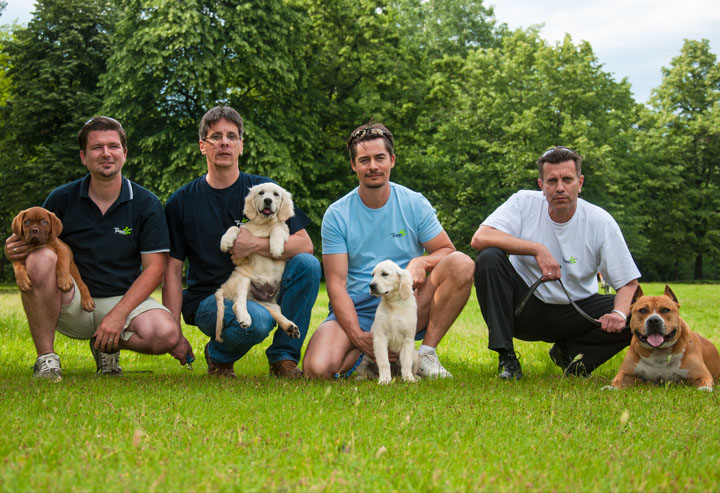
You could do the work we do yourself,
no doubt about it. You could travel around Europe visiting the finest European breeders in person (most probably with the help of an interpreter!).
Arranging documents, health checks and travel arrangements. But the fact is, you don’t want to do all this. The fact is you don’t have to! All you want is a healthy puppy that makes your family complete, and that is exactly what Euro Puppy provides for you. Trust Euro Puppy to do all the work and bring you the very best puppy. We are the choice of over 5000 happy families during more than 15 years of service.
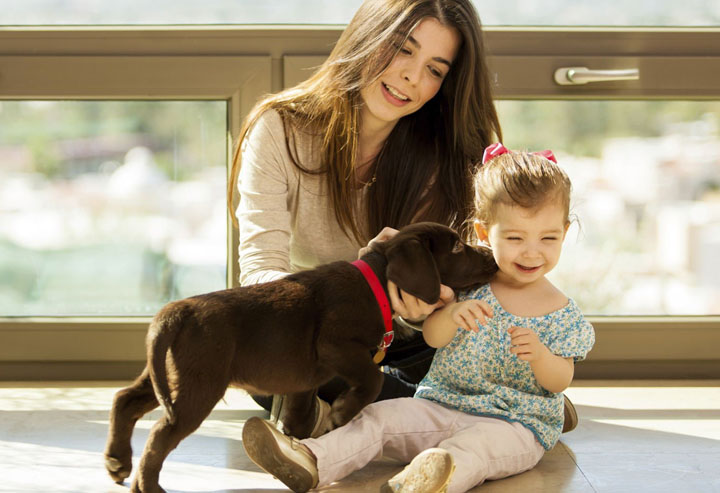
How to Get your Dream Puppy
You find your dreamy puppy on our site
You can get advice from our breed experts
You can reserve your puppy with our secure payment system
You relax while we get to work organising everything for you
We offer a pre departure training and socialization service
We take your puppy to a veterinary for a pre flight check up
We safely ship your puppy to you when it is old enough to travel
You meet your puppy and begin your life together
Classic Breeds that never Go Out of Fashion
All puppies for sale
Labrador Retriever
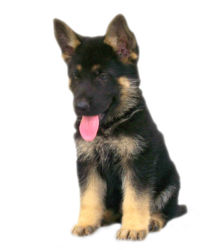
German Shepherd Dog
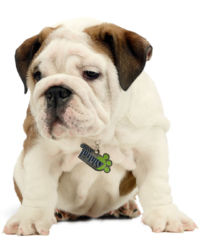
English Bulldog
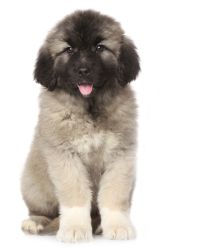
Caucasian Mountain Dog
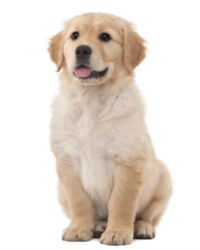
Golden Retriever
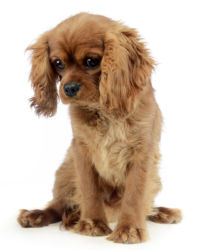
Cavalier King Charles Spaniel
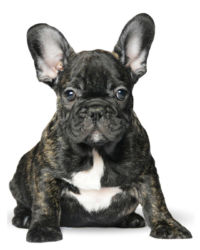
French Bulldog
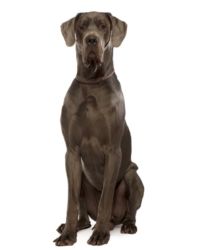
Great Dane
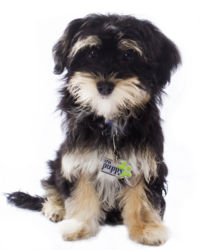
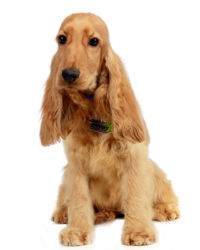
English Cocker Spaniel
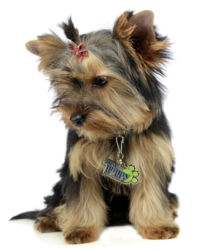
Yorkshire Terrier
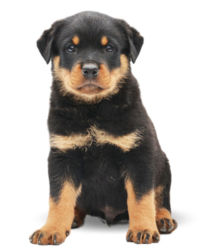
Rottweiler
Most popular
Sensational puppies that everyone wants
New Arrivals
Latest furry bundles from the breeders
Breeder's Choice
The experts Pick of the Litter
Best Prices
Great Value, Quality Bred Puppies
Best of Euro Puppy
The Most Exclusive Puppies from Champion Parents
I'm Adopted
Puppies that have found their Families
The Puppy Matters
Feel Safe and Secure in your Choice!
Breeder Inspection
Before we put a puppy on the Euro Puppy site, we visit the breeder in person, check the living conditions, and inspect every puppy. Only then when we have ensured everything meets our, and your, high standards, will a perfect puppy be waiting for you on our site.
Committed to You and your Puppy
Buying a puppy online is a big deal for you, no doubt about it. And it is a big deal for us too! Throughout your journey with us, from the moment you first contact us, to after you have chosen your puppy, even beyond when you are together with your puppy, you will get personal support from us.
Fully vaccinated and dewormed puppy
Health and safety always comes first! Every single puppy gets the best treatment. All our puppies are given every vaccination required for their age and your location and are fully dewormed up to date. All the health, vet, and vaccination documents will arrive with your puppy.
Lifetime Health Guarantee
A puppy is a long term joy and a long term commitment on your part. So you deserve to feel real peace of mind knowing you are protected for the whole time you are together with your dog. This is what you receive from Euro Puppy, guaranteed.
Pre departure Check up with vet
Every Puppy gets a final check up at the vet, and only if they are given the full all clear, do we allow them to safely travel to you.
Safely Shipped
We deliver your puppy through pet friendly airlines, such as Lufthansa, KLM, Qatar Airways, in a comfortable crate, climate controlled cabin, and ensure the puppy has the shortest possible journey. If an overnight layover is necessary, we ensure that the Airline provides a full pet service.
Adopt from Euro Puppy to have your very own dream puppy
that will complete your life!
The Euro Puppy Dog Owner Corner Over 5000 Happy Families all Around the World
Euro Puppy is proud and honoured to have helped 1000’s of dog lovers all over the globe in the last 15 years. And many of them are happy to come back to us, often years later to give us a glimpse into their happy lives. Check these stories out before you choose, and then become part of our happy family!
Shopping at Euro Puppy
Knowledge base
Company Info
Payment options
Connect with us
Subscribe to our Newsletter
© Euro Puppy, INC. 2001-2018 all rights reserved
Napolitano et al
Access additional case information on PACER
Use the links below to access additional information about this case on the US Court's PACER system. A subscription to PACER is required.
Disclaimer: Justia Dockets & Filings provides public litigation records from the federal appellate and district courts. These filings and docket sheets should not be considered findings of fact or liability, nor do they necessarily reflect the view of Justia.
Lawyers - Get Listed Now!
Subscribe to Justia's Free Newsletters featuring summaries of federal and state court opinions .
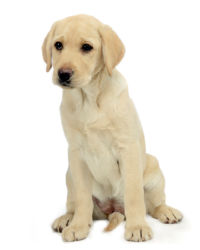
Комментариев нет:
Отправить комментарий